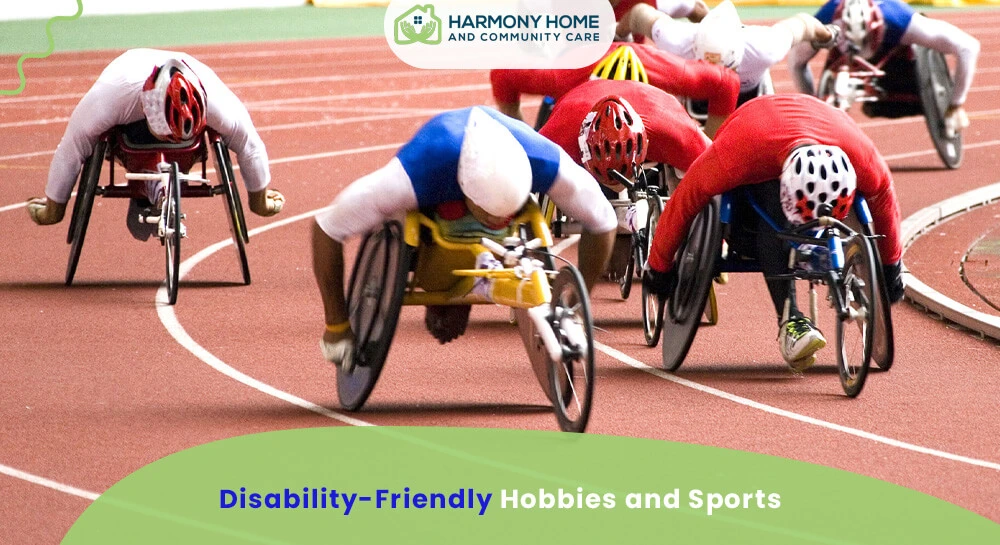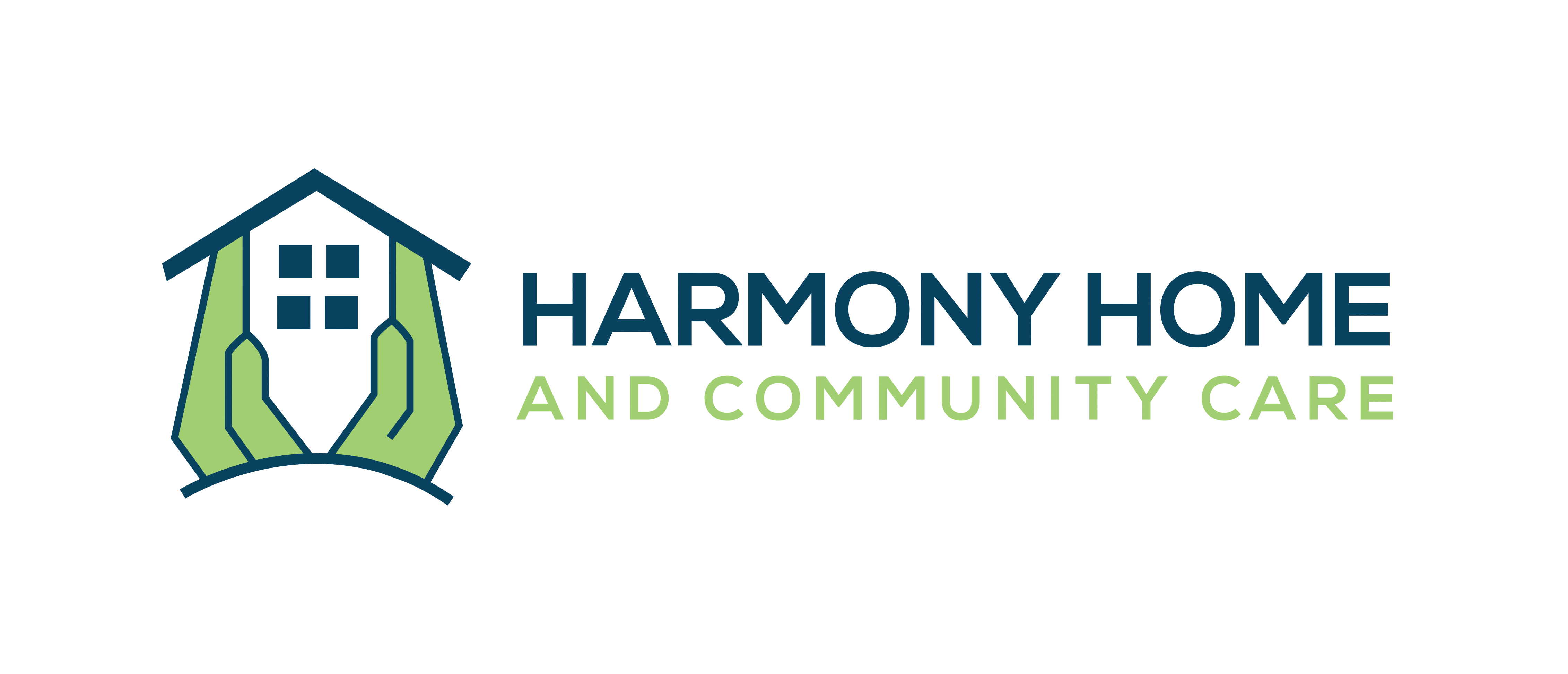Harmony Homes
March 1, 2024
Disability-Friendly Hobbies and Sports: Embracing Inclusivity for All

Disability-Friendly Hobbies and Sports: Embracing Inclusivity for All
1. Adaptive Gaming and Virtual Reality
Customizable settings
Game developers have recognized the importance of inclusivity and often include features that allow players to adjust game difficulty, controls, and visual cues, ensuring an enjoyable experience for all.
Increased social interaction:
Online multiplayer gaming introduces opportunities for individuals with disabilities to interact with gamers worldwide, fostering social connections and combating isolation.

Recent Posts
Categories
Virtual Reality:
Breaking Boundaries, Expanding Horizons Virtual reality technology has made significant strides in recent years, offering unique experiences that transcend physical limitations. VR creates simulated environments that users can explore, providing a sense of presence and immersion. For individuals with disabilities, it opens doors to activities and scenarios they may not be able to experience in their daily lives.
Mobility independence:
VR allows individuals with mobility difficulties to engage in physical activities, such as virtual sports, dancing, exploring virtual landscapes, or even climbing mountains, promoting exercise and well-being.
Therapeutic benefits:
Virtual reality therapy is being utilized to assist in physical and cognitive rehabilitation, sensory integration, and anxiety reduction, providing an effective and engaging tool for therapy in a controlled environment.
E-sports and competitive gaming:
E-sports competitions have seen the rise of disability-inclusive tournaments, offering platforms for talented gamers with disabilities to showcase their skills and compete at a professional level.
Accessibility advocacy:
The growing presence of adaptive gaming and VR has sparked awareness and advocacy for accessibility in the gaming industry, driving developers to create more inclusive games and technologies.
Wheelchair sports
Wheelchair sports have flourished in recent years, offering individuals with mobility challenges the opportunity to engage in competitive and fulfilling athletic pursuits. These sports create a sense of community, promote physical fitness, and challenge perceptions surrounding disabilities. Let’s explore the world of wheelchair sports, highlighting the benefits and diverse range of activities that embrace inclusivity and empower athletes with disabilities.
Wheelchair Basketball:
A Thrilling Test of Skill and Strategy
Wheelchair basketball is one of the most popular wheelchair sports, capturing the intensity and excitement of its able-bodied counterpart. Played on specially designed courts, this adaptive sport emphasizes teamwork, strategy, and agility. Athletes manoeuvre their wheelchairs while shooting, passing, and defending, fostering a competitive spirit and camaraderie among participants.
Paralympic success:
Wheelchair basketball has been a staple of the Paralympic Games since 1960, showcasing the immense talent and dedication of wheelchair athletes on a global stage.
Local and national competitions:
Various organizations and clubs organize wheelchair basketball leagues and tournaments, providing opportunities for athletes to develop their skills and compete at different levels.
2. Wheelchair Rugby:
Unleashing Strength and Strategy Wheelchair rugby, also known as murderball, is a fast-paced, full-contact sport specifically designed for athletes with quadriplegia. Combining elements of basketball, rugby, and hockey, this exhilarating sport requires athletes to navigate the court while passing, catching, and scoring goals, all while manoeuvring in specialized wheelchairs. Wheelchair rugby provides an outlet for athletes to showcase their strength, endurance, and tactical skills.
Rule of classification:
Wheelchair rugby uses a classification system based on the athlete’s functional ability, ensuring fair competition and allowing individuals of various mobility levels to participate.
International recognition:
Wheelchair rugby has gained significant recognition worldwide, with its inclusion in Paralympic Games and international tournaments attracting a growing fan base.
3. Wheelchair Tennis: Achieving Agility and Precision
Wheelchair tennis brings the excitement and technique of traditional tennis to a wheelchair-accessible court. Athletes with various mobility impairments utilize specially designed wheelchairs and adaptive rules to compete at a high level. The combination of skill, finesse, and mobility showcases the versatility of wheelchair athletes in this challenging sport.
Inclusive rules:
Wheelchair tennis follows similar rules to traditional tennis, with minor adaptations, such as allowing the ball to bounce twice before being returned, which accommodates athletes’ mobility limitations.
Global participation:
International events, including Grand Slam tournaments, highlight the increasing popularity and competitiveness of wheelchair tennis as athletes compete for prestigious titles and rankings.
4.Wheelchair Racing: Speeding towards the Finish Line
Wheelchair racing enables athletes with mobility impairments to compete in high-speed track events. Using lightweight, aerodynamic racing wheelchairs, athletes display exceptional upper body strength and endurance as they race across various distances. Wheelchair racing not only promotes physical fitness but also provides a platform for athletes to challenge personal limits and inspire others.
Paralympic excellence:
Wheelchair racing is a marquee event in the Paralympic Games, with athletes achieving remarkable speeds and setting world records.
Inclusive marathons and road races:
Many marathons and road races now include wheelchair divisions, allowing athletes to participate alongside able-bodied runners, contributing to a more inclusive and diverse sporting atmosphere.
5. Para dance:
Para Dance, formerly known as wheelchair dance sport, is a captivating and inclusive activity that combines the passion of dance with the creativity of artistic expression. Designed for individuals with physical disabilities and impairments, Para Dance offers a platform for self-expression, social connection, and physical well-being. Let’s explore into the world of Para Dance, highlighting its benefits and the joy it brings to participants.
The Artistry of Para Dance:
Embracing Expression through Movement
Para Dance encompasses a wide range of dance styles, including ballroom, Latin, freestyle, and contemporary. Participants are empowered to explore their artistic potential, regardless of their mobility or physical challenges. The graceful movements, fluid partnering, and expressive storytelling inherent in Para Dance foster a sense of joy, confidence, and creative self-expression.
Adapted choreography:
Para Dance acknowledges and accommodates individual abilities and limitations, allowing dancers to modify movements and routines to suit their unique needs and capabilities.
Inclusive partnerships:
Para Dance often involves partnerships between wheelchair users and standing dancers, creating a beautiful and harmonious connection that transcends physical differences and enhances the overall artistic experience.
Physical and Emotional Well-being: The Power of Movement
Para Dance promotes physical fitness, coordination, and flexibility, while also offering emotional and mental benefits. Engaging in dance movements activates various muscle groups and stimulates cardiovascular endurance, contributing to improved overall fitness levels. Moreover, the rhythmic and creative aspects of dance help reduce stress, boost confidence, and enhance well-being.
Rehabilitation and therapy:
Para Dance are often integrated into rehabilitation programs, helping individuals with disabilities regain strength, balance, and mobility while providing an enjoyable and motivating alternative to traditional therapy methods.
Psychological empowerment:
Dance provides a channel for participants to express their feelings, aspirations, and personalities, fostering a positive body image and a sense of empowerment.
Inclusive Community and Competition
Para Dance offers a supportive and inclusive community where participants can connect, share experiences, and forge lasting friendships. From local dance clubs and workshops to international competitions, Para Dance provides numerous opportunities for individuals with disabilities to thrive and showcase their talents.
Dance events and festivals:
Para Dance events and festivals bring dancers of all abilities together, celebrating diversity and talent while inspiring others to explore and engage in inclusive dance.
Competitive opportunities:
Para Dance competitions at local, national, and international levels provide a platform for dancers to demonstrate their artistry, skills, and passion. These events showcase the depth and diversity of talent present in the Para Dance community.


